Baby Teething: Symptoms, Signs & Remedies
Written by Connor Bringas on March 20, 2023.
Teething is a big step for your little one—and it often comes with its fair share of drama. One day, they’re all gummy grins, and the next, you spot the first signs of teething: drooling, fussiness, and a sudden urge to gnaw on anything within arm’s reach. Those tiny baby teeth are on their way, and your teething baby is just as determined as ever to make it through this stage!
While it might seem like an uphill climb, baby teething is another part of their growing-up adventure. In this guide, we’ll cover common teething symptoms, what to expect as those baby teeth make their debut, and some home remedies for a teething baby to help soothe sore gums and keep everyone happy.
Table of Contents
- What is Teething?
- Teething Symptoms
- When Do Babies Get Teeth?
- When Do Babies Start Teething?
- How Long Does Teething Last?
- Teething Remedies
- FAQs
What is Teething?
Baby teething, or odontiasis, is when a baby’s first teeth break through their gums—a small step for teeth, but a big milestone for your little one. Before those tiny baby teeth break through, hormones soften the gum tissue to clear the way for those pearly whites. This can cause tender, swollen gums, making your teething baby fussy or uncomfortable.
While teething can be challenging, it’s a normal part of development. Common signs include drooling, chewing on almost anything, and irritability. Though the process might feel long, it’s temporary—and it marks an important breakthrough as your baby’s first teeth appear!
Teething Symptoms
Not every baby experiences teething the same way, but there are a few common symptoms to keep on your radar. Here’s the scoop on what’s normal, what’s not, and how to tell when those tiny teeth are on their way.
1. Drool, Drool, and More Drool
Teething often turns your baby into a miniature fountain. That extra drool isn’t just for show—it’s their body’s way of soothing irritated gums. Keep bibs and wipes handy because, yes, it can be a bit messy.
2. Gum Rubbing and Chewing on Everything
Your baby might suddenly turn into a little chomper, gnawing and rubbing their gums on toys, fingers, or anything else within reach. This is their attempt to relieve the pressure of baby teeth pushing through their gums.
3. Fussiness and Restless Sleep
Sore gums from emerging baby teeth can make even the most laid-back little ones cranky. You might notice more tears, clinginess, or disrupted sleep patterns. Don’t worry—it’s just a phase (albeit an exhausting one).
4. Swollen, Tender Gums
If you peek inside your teething baby’s mouth, you might notice some swollen spots. A cool baby teether toy or a gentle gum massage can offer them some relief.
5. Reduced Appetite
Teething can make chewing feel like a chore. At this point, your baby might avoid their usual solids in favor of softer or chilled foods—that’s your cue to whip up some mashed bananas or grab a teething-friendly snack.
Teething Fever
Teething can sometimes cause a mild increase in a baby’s body temperature, commonly known as "teething fever." This low-grade fever usually falls between 100 and 100.4°F.
However, if your baby develops a higher fever, it’s unlikely to be related to teething and could indicate another underlying issue. In this situation, it’s important to contact your doctor for advice and proper care.
Teething Rash
Teething rash is a common issue for babies, but it’s not directly caused by teething. Instead, it results from the increased drooling that often accompanies this stage. The excess saliva can irritate a teething baby’s sensitive skin, leading to a rash that usually appears on the cheeks, chin, or chest.
To prevent this discomfort, keep a cloth handy and gently wipe away the drool throughout the day. This simple step can help minimize skin irritation and keep your baby more comfortable.
When to Call the Pediatrician
Baby teething isn’t an illness, so symptoms like diarrhea, vomiting, or a full-body rash aren’t typical. Gums shouldn’t bleed, and their face shouldn’t swell. Seek medical advice if you notice anything concerning or signs of infection like pus.
When Do Babies Get Teeth?
While some overachievers start sprouting baby teeth as early as 3 months, most babies stick to the timeline of 4 to 7 months for their first pearly whites. By the time your toddler hits their third birthday, they’re likely rocking a full set of 20 primary teeth.
Here’s the typical timeline for baby teething stages:
- Bottom front teeth: The two central incisors on the bottom typically emerge first.
- Top front teeth: About a month later, the four central and lateral incisors on the top follow.
- Lower side teeth: Next, the lower lateral incisors erupt alongside the first bottom teeth.
- First molars: These appear next—ideal for grinding food.
- Upper canines: Finally, those top pointy teeth.
In rare cases, babies may be born with a tooth or two, which isn’t usually an issue unless they interfere with feeding or become loose (aka, a choking risk). If your little one’s teeth are fashionably late, don’t hesitate to check in with your doctor for peace of mind.
When Do Babies Start Teething?
Teething typically begins between 4 and 7 months, but like everything with babies, there's a wide range of normal. Some may start earlier, while others hold off until their first birthday to surprise you with that first little tooth.
How Long Does Teething Last?
Teething doesn’t last forever, even if it feels that way during the tough nights. Most kids will have their full set of 20 baby teeth by the time they turn 3 years old.
The good news? As more baby teeth erupt, the discomfort often decreases, giving both you and your little one some relief. While teething can be challenging, it’s a phase that wraps up quicker than it seems, leaving a big, toothy grin in its wake.
Teething Remedies
We've got the lowdown on how to soothe your little one when teething gets tough. These straightforward remedies are here to ease the discomfort and bring a little peace to your teething saga.
From soothing techniques to baby teethers, we’ll help you and your teething baby get through this phase with less fuss.
Baby’s Teething Toys
When your baby’s gums are on fire, a baby teether toy or pacifier can be a lifesaver. These little wonders are designed to be chewed, chomped, and drooled all over, providing just the right amount of pressure to soothe those sore gums.
The Tushbaby Teether takes relief up a notch, offering a personalized twist with alphabet letters that soothe and spark early learning. Plus, you can attach it to your Tushbaby or Snug to keep it close and those little hands busy during tough teething days.
If bedtime is becoming a teething nightmare, offering a baby teether before lights out can solve the problem of how to soothe a teething baby at night and help everyone wind down for some much-needed rest.
Teething tantrums can hit out of nowhere, so having a baby teether or pacifier ready is essential—but keeping it clean while you’re on the move? That’s where The Pod comes in. This compact, stylish case clips right onto your bag or baby carrier to keep pacis clean, accessible, and always ready for action. No more digging through the depths of your diaper bag only to find a paci covered in purse gunk.
Massage Baby’s Gums
A soft gum massage can work wonders for easing teething discomfort. With a clean finger or a cool, damp cloth, gently rub your baby’s swollen gums to help relieve the pressure. It’s a simple, effective way to provide relief and a moment of calm during the teething phase.
Cold Items
When your baby’s teething, cooling treats are a must-have—both at home and on the go. Whether you’re running errands or just out for a stroll, having something chilled on hand is key for alleviating those sudden gum pains. The Tushbaby Hip Carrier makes it easy to keep these soothing essentials close by—with five spacious storage pockets, you can stash baby teethers, frozen snacks, and even ice packs right on your hip as you carry your little one, so you’re ready to tackle teething troubles anywhere.
If you’re struggling with how to help a teething baby sleep, cooling treats can be a gamechanger. Whether it's a chilled baby teether, a frozen washcloth, or even some DIY breast milk/formula popsicles, these cool snacks help soothe your teething baby while keeping them busy. The cold sensation numbs the gums and reduces inflammation to give your baby a moment of relief.
FAQs
Can Teething Cause Diarrhea?
Nope—while teething can bring on the drool and a little crankiness, it’s not to blame for tummy troubles like diarrhea. If your teething baby is experiencing stomach problems, it’s worth checking in with your pediatrician to rule out anything else.
Can a Baby Get a Cold from Teething?
Teething doesn’t hand out colds like party favors—while your little one might run a mild temperature (below 100.4°F) during teething, it’s not the culprit behind fevers, runny noses, or other cold-like symptoms. If your baby is showing signs of the sniffles, it’s likely due to something else—so it’s worth keeping an eye on them and checking in with your pediatrician if needed.
Does Teething Get Worse at Night?
It sure feels like it, doesn’t it? The quiet time before sleep means no distractions for your baby—just them and those pesky teething gums. This can make discomfort seem more intense, leading to peak fussiness at bedtime and naptime.
While teething might make your baby fussier when it’s time to sleep, you should still keep them snoozing on their back until they’re ready for other positions. Find out more about the best baby sleeping positions.
What to Not Do during Teething
When it comes to soothing your teething baby, safety comes first. Here’s what to avoid:
- Teething necklaces and beads: These may look helpful but are serious choking and strangulation hazards. Stick with safe, tried-and-true baby teether toys instead.
- Numbing gels and creams: Topical gels can numb more than just gums, and potentially cause choking. Opt for safer remedies like cold teethers or gum massages.
- Teething biscuits and snacks: These can crumble into choking hazards and contain added sugars that aren’t great for those budding teeth. Choose chilled teethers or even breast milk popsicles for safer relief.
With the right remedies and a little patience, those cute baby teeth will make their debut before you know it—leaving your little one with a big, toothy grin and the teething chapter officially behind you.
Check out Tushbaby’s collection of baby gear and tackle teething (and parenthood) with ease and style.
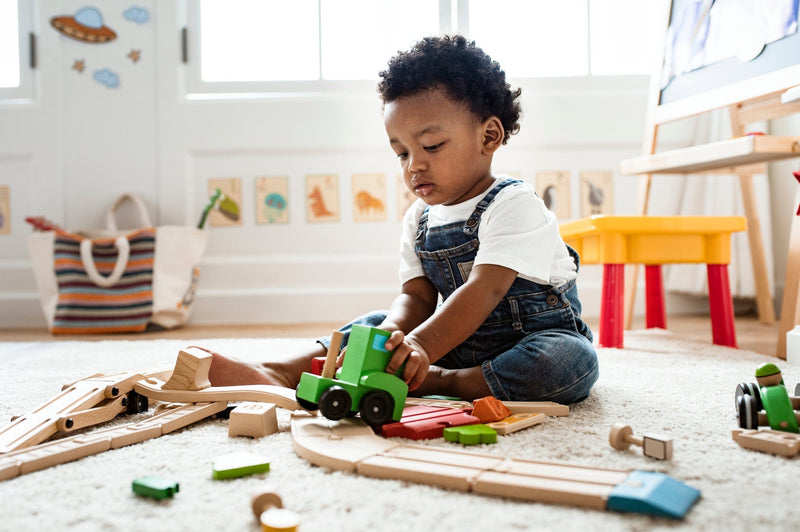

![Tushbaby photo - Women holding baby using tushbaby gray ::[15109665390658]](http://tushbaby.com/cdn/shop/files/GreyCarrier.webp?v=1762198155)
![Tushbaby photo - Women holding baby using tushbaby gray ::[15109665390658]](http://tushbaby.com/cdn/shop/files/Grey3.webp?v=1748543102)
![Tushbaby photo - Women holding baby using tushbaby gray ::[15109665390658]](http://tushbaby.com/cdn/shop/files/rKeAfN6W.webp?v=1748543102)
![Tushbaby photo - Women holding baby using tushbaby gray ::[15109665390658]](http://tushbaby.com/cdn/shop/files/Grey4_95ede319-844c-41db-96eb-608ec6a3b897.webp?v=1748543102)
![Tushbaby photo - Women holding baby using tushbaby gray ::[15109665390658]](http://tushbaby.com/cdn/shop/files/Grey2.webp?v=1748543102)
![Tushbaby photo - Women holding baby using tushbaby gray ::[15109665390658]](http://tushbaby.com/cdn/shop/files/Grey5.webp?v=1747418215)
![Tushbaby photo - Hip seat carrier,baby carrier hip seat,baby wrap carrier baby carrier wrap,baby carrier,baby wrap carriers,baby carriers,baby wraps,baby sling wrap,baby slings,baby wrap sling,carrier for big baby, toddler carrier, nursing carrier, breastfeeding carrier, diaper bag, baby belt carrier, strapless carrier, big kid carrier, special needs carrier,Tote,Diaper bag,Tote bag,Diaper pad,Changing pad,Pacifier pod,Coin purse,Vegan leather bag,Vegan tote,Vegan baby products,plus sized baby carrier::[15109665390658]](http://tushbaby.com/cdn/shop/files/Grey8.webp?v=1747418215)
![Tushbaby photo - Tushbaby grey holding bottle ::[15109665390658]](http://tushbaby.com/cdn/shop/files/Grey9.webp?v=1747418215)
![Tushbaby photo - Women using tushbaby::[15109665423426]](http://tushbaby.com/cdn/shop/files/BlackColor1.webp?v=1747418215)
![Tushbaby photo - man using tushbaby::[15109665423426]](http://tushbaby.com/cdn/shop/files/BlackColor2.webp?v=1747418215)
![Tushbaby photo - Women using tushbaby::[15109665423426]](http://tushbaby.com/cdn/shop/files/BlackColor3.webp?v=1747418215)
![Tushbaby photo - ::[15109665423426]](http://tushbaby.com/cdn/shop/files/BlackColor4.webp?v=1747418215)
![Tushbaby photo - ::[15109665423426]](http://tushbaby.com/cdn/shop/files/BlackColor5.webp?v=1747418215)
![Tushbaby photo - ::[15109665423426]](http://tushbaby.com/cdn/shop/files/BlackColor6.webp?v=1747418215)
![Tushbaby photo - ::[15109665423426]](http://tushbaby.com/cdn/shop/files/BlackColor7.webp?v=1747418215)
![Tushbaby photo - ::[15109665423426]](http://tushbaby.com/cdn/shop/files/BlackColor9.webp?v=1747418215)
![Tushbaby photo - Women using tushbaby::[15109665521730]](http://tushbaby.com/cdn/shop/files/Black_Gold1_3.webp?v=1747418215)
![Tushbaby photo - Women using tushbaby::[15109665521730]](http://tushbaby.com/cdn/shop/files/Black_Gold2.webp?v=1747418215)
![Tushbaby photo - Women using tushbaby::[15109665521730]](http://tushbaby.com/cdn/shop/files/Black_Gold3.webp?v=1747418215)
![Tushbaby photo - Women using tushbaby::[15109665521730]](http://tushbaby.com/cdn/shop/files/Black_Gold4.webp?v=1747418215)
![Tushbaby photo - Man using tushbaby::[15109665521730]](http://tushbaby.com/cdn/shop/files/Black_Gold5.webp?v=1747418215)
![Tushbaby photo - Women using tushbaby::[15109665521730]](http://tushbaby.com/cdn/shop/files/Black_Gold6.webp?v=1747418215)
![Tushbaby photo - Tushbaby::[15109665521730]](http://tushbaby.com/cdn/shop/files/Black_Gold7.webp?v=1747418215)
![Tushbaby photo - Tushbaby::[15109665521730]](http://tushbaby.com/cdn/shop/files/Black_Gold9.webp?v=1747418215)
![Tushbaby photo - ::[31311822422082]](http://tushbaby.com/cdn/shop/files/VeganLeatherBlack1.webp?v=1747418215)
![Tushbaby photo - ::[31311822422082]](http://tushbaby.com/cdn/shop/files/VeganLeatherBlack3.webp?v=1747418215)
![Tushbaby photo - ::[31311822422082]](http://tushbaby.com/cdn/shop/files/VeganLeatherBlack4.webp?v=1747418215)
![Tushbaby photo - ::[31311822422082]](http://tushbaby.com/cdn/shop/files/VeganLeatherBlack5.webp?v=1747418215)
![Tushbaby photo - ::[31311822422082]](http://tushbaby.com/cdn/shop/files/VeganLeatherBlack7.webp?v=1747418215)
![Tushbaby photo - ::[31311822422082]](http://tushbaby.com/cdn/shop/files/VeganLeatherBlack8.webp?v=1747418215)
![Tushbaby photo - ::[31311822422082]](http://tushbaby.com/cdn/shop/files/VeganLeatherBlack9.webp?v=1747418215)
![Tushbaby photo - ::[40092713287746]](http://tushbaby.com/cdn/shop/files/LiteCharcoal1.webp?v=1747418215)
![Tushbaby photo - ::[40092713287746]](http://tushbaby.com/cdn/shop/files/LiteCharcoal2.webp?v=1747418215)
![Tushbaby photo - ::[40092713287746]](http://tushbaby.com/cdn/shop/files/LiteCharcoal3.webp?v=1747418215)
![Tushbaby photo - ::[40092713287746]](http://tushbaby.com/cdn/shop/files/LiteCharcoal4.webp?v=1747418215)
![Tushbaby photo - ::[40092713287746]](http://tushbaby.com/cdn/shop/files/LiteCharcoal6.webp?v=1747418215)
![Tushbaby photo - ::[40092713287746]](http://tushbaby.com/cdn/shop/files/LiteCharcoal7.webp?v=1747418215)
![Tushbaby photo - ::[40092713287746]](http://tushbaby.com/cdn/shop/files/LiteCharcoal8.webp?v=1747418215)
![Tushbaby photo - ::[40092713320514]](http://tushbaby.com/cdn/shop/files/VelvetSable1.webp?v=1747418215)
![Tushbaby photo - ::[40092713320514]](http://tushbaby.com/cdn/shop/files/VelvetSable3.webp?v=1747418215)
![Tushbaby photo - ::[40092713320514]](http://tushbaby.com/cdn/shop/files/VelvetSable4.webp?v=1747418215)
![Tushbaby photo - ::[40092713320514]](http://tushbaby.com/cdn/shop/files/VelvetSable5.webp?v=1747418215)
![Tushbaby photo - ::[40092713320514]](http://tushbaby.com/cdn/shop/files/VelvetSable6.webp?v=1747418215)
![Tushbaby photo - ::[40092713320514]](http://tushbaby.com/cdn/shop/files/VelvetSable7.webp?v=1747418215)
![Tushbaby photo - ::[40092713320514]](http://tushbaby.com/cdn/shop/files/VelvetSable8.webp?v=1747418215)
![Tushbaby photo - ::[40288698040386]](http://tushbaby.com/cdn/shop/files/VeganLeatherCognac1.webp?v=1747418215)
![Tushbaby photo - ::[40288698040386]](http://tushbaby.com/cdn/shop/files/VeganLeatherCognac3.webp?v=1747418215)
![Tushbaby photo - ::[40288698040386]](http://tushbaby.com/cdn/shop/files/VeganLeatherCognac4.webp?v=1747418215)
![Tushbaby photo - ::[40288698040386]](http://tushbaby.com/cdn/shop/files/VeganLeatherCognac5.webp?v=1747418215)
![Tushbaby photo - ::[40288698040386]](http://tushbaby.com/cdn/shop/files/VeganLeatherCognac6.webp?v=1747418215)
![Tushbaby photo - ::[40288698040386]](http://tushbaby.com/cdn/shop/files/VeganLeatherCognac7.webp?v=1747418215)
![Tushbaby photo - ::[40288698040386]](http://tushbaby.com/cdn/shop/files/VeganLeatherCognac8.webp?v=1747418215)
![Tushbaby photo - ::[40288698040386]](http://tushbaby.com/cdn/shop/files/VeganLeatherCognac9.webp?v=1747418215)
![Tushbaby photo - ::[40288698040386]](http://tushbaby.com/cdn/shop/files/VeganLeatherCognac10.webp?v=1747418215)
![Tushbaby photo - ::[40503457382466]](http://tushbaby.com/cdn/shop/files/Orchid1Square.webp?v=1747418215)
![Tushbaby photo - ::[40503457382466]](http://tushbaby.com/cdn/shop/files/Orchid3Square.webp?v=1747418215)
![Tushbaby photo - ::[40503457382466]](http://tushbaby.com/cdn/shop/files/Orchid4Square.webp?v=1747418215)
![Tushbaby photo - ::[40503457382466]](http://tushbaby.com/cdn/shop/files/Orchid5Square.webp?v=1747418215)
![Tushbaby photo - ::[40503457382466]](http://tushbaby.com/cdn/shop/files/Orchid6Square.webp?v=1747418215)
![Tushbaby photo - ::[40503457382466]](http://tushbaby.com/cdn/shop/files/Orchid7Square.webp?v=1747418215)
![Tushbaby photo - ::[40503457382466]](http://tushbaby.com/cdn/shop/files/Orchid8Square.webp?v=1747418215)
![Tushbaby photo - ::[40503457382466]](http://tushbaby.com/cdn/shop/files/Orchid9Square.webp?v=1747418215)
![Tushbaby photo - ::[40503457382466]](http://tushbaby.com/cdn/shop/files/Orchid10Square.webp?v=1747418215)
![Tushbaby photo - ::[40288993017922]](http://tushbaby.com/cdn/shop/files/VeganLeatherCream1.webp?v=1747418215)
![Tushbaby photo - ::[40288993017922]](http://tushbaby.com/cdn/shop/files/VeganLeatherCream3.webp?v=1747418215)
![Tushbaby photo - ::[40288993017922]](http://tushbaby.com/cdn/shop/files/VeganLeatherCream4.webp?v=1747418215)
![Tushbaby photo - ::[40288993017922]](http://tushbaby.com/cdn/shop/files/VeganLeatherCream6.webp?v=1747418215)
![Tushbaby photo - ::[40288993017922]](http://tushbaby.com/cdn/shop/files/TBcream_blackseat2.jpg?v=1759513482)
![Tushbaby photo - ::[40288993017922]](http://tushbaby.com/cdn/shop/files/VeganLeatherCream7.webp?v=1759513482)
![Tushbaby photo - ::[40288993017922]](http://tushbaby.com/cdn/shop/files/VeganLeatherCream9.webp?v=1759513482)
![Tushbaby photo - ::[40503457415234]](http://tushbaby.com/cdn/shop/files/SnowLeopard1.webp?v=1759513482)
![Tushbaby photo - ::[40288993017922]](http://tushbaby.com/cdn/shop/files/TBcream_blackseat1_b994af6f-4e75-4f7b-b8ba-9750798bd0e7.jpg?v=1759513482)
![Tushbaby photo - ::[40503457415234]](http://tushbaby.com/cdn/shop/files/SnowLeopard3.webp?v=1759513482)
![Tushbaby photo - ::[40503457415234]](http://tushbaby.com/cdn/shop/files/SnowLeopard4.webp?v=1759513482)
![Tushbaby photo - ::[40503457415234]](http://tushbaby.com/cdn/shop/files/SnowLeopard5.webp?v=1759513482)
![Tushbaby photo - ::[40503457415234]](http://tushbaby.com/cdn/shop/files/SnowLeopard6.webp?v=1759513482)
![Tushbaby photo - ::[40503457415234]](http://tushbaby.com/cdn/shop/files/SnowLeopard7.webp?v=1759513482)
![Tushbaby photo - ::[40503457415234]](http://tushbaby.com/cdn/shop/files/SnowLeopard8.webp?v=1759513482)
![Tushbaby photo - ::[40503457415234]](http://tushbaby.com/cdn/shop/files/SnowLeopard9.webp?v=1759513482)
![Tushbaby photo - ::[40503457448002]](http://tushbaby.com/cdn/shop/files/Tweed1.-Square.webp?v=1759513482)
![Tushbaby photo - ::[40503457448002]](http://tushbaby.com/cdn/shop/files/Tweed3-Square.webp?v=1759513482)
![Tushbaby photo - ::[40503457448002]](http://tushbaby.com/cdn/shop/files/Tweed4-Square.webp?v=1759513482)
![Tushbaby photo - ::[40503457448002]](http://tushbaby.com/cdn/shop/files/Tweed5-Square.webp?v=1759513482)
![Tushbaby photo - ::[40503457448002]](http://tushbaby.com/cdn/shop/files/Tweed6-Square.webp?v=1759513482)
![Tushbaby photo - ::[40503457448002]](http://tushbaby.com/cdn/shop/files/Tweed8-Square.webp?v=1759513482)
![Tushbaby photo - ::[41633540800578]](http://tushbaby.com/cdn/shop/files/Marble1.webp?v=1759513482)
![Tushbaby photo - ::[41633540800578]](http://tushbaby.com/cdn/shop/files/Marble2.webp?v=1759513482)
![Tushbaby photo - ::[41633540800578]](http://tushbaby.com/cdn/shop/files/Marble4.webp?v=1759513482)
![Tushbaby photo - ::[41633540800578]](http://tushbaby.com/cdn/shop/files/Marble5.webp?v=1759513482)
![Tushbaby photo - ::[41633540800578]](http://tushbaby.com/cdn/shop/files/Marble6.webp?v=1759513482)
![Tushbaby photo - ::[41633540800578]](http://tushbaby.com/cdn/shop/files/Marble7.webp?v=1759513482)
![Tushbaby photo - ::[41633540800578]](http://tushbaby.com/cdn/shop/files/Marble8.webp?v=1759513482)
![Tushbaby photo - ::[41633540800578]](http://tushbaby.com/cdn/shop/files/Marble9.webp?v=1759513482)
![Tushbaby photo - ::[41984257556546]](http://tushbaby.com/cdn/shop/files/Olive1_297431f9-eeb3-411c-bc0e-08d37e703197.webp?v=1759513482)
![Tushbaby photo - ::[41984257556546]](http://tushbaby.com/cdn/shop/files/Olive2_bb6953ff-d61f-471a-b48f-3b36c7dbfb21.webp?v=1759513482)
![Tushbaby photo - ::[41984257556546]](http://tushbaby.com/cdn/shop/files/Olive3_97f99469-33f5-4192-9446-dcdfdbf32e84.webp?v=1759513482)
![Tushbaby photo - ::[41984257556546]](http://tushbaby.com/cdn/shop/files/Olive4_f9c88ddf-96de-476c-bef3-d57f9ddbd5c1.webp?v=1759513482)
![Tushbaby photo - ::[41984257556546]](http://tushbaby.com/cdn/shop/files/Olive5_e2741f35-99ec-4ed5-9307-809ef4ead286.webp?v=1759513482)
![Tushbaby photo - ::[41984257556546]](http://tushbaby.com/cdn/shop/files/Olive6_a66205d9-b767-4224-a04f-6e20597c7c38.webp?v=1759513482)
![Tushbaby photo - ::[41984257556546]](http://tushbaby.com/cdn/shop/files/Olive7_ab97dc70-f0b9-4a70-9137-943b8e3982e1.webp?v=1759513482)
![Tushbaby photo - ::[41984257556546]](http://tushbaby.com/cdn/shop/files/Olive8.webp?v=1759513482)
![Tushbaby photo - ::[41984257556546]](http://tushbaby.com/cdn/shop/files/Olive9.webp?v=1759513482)
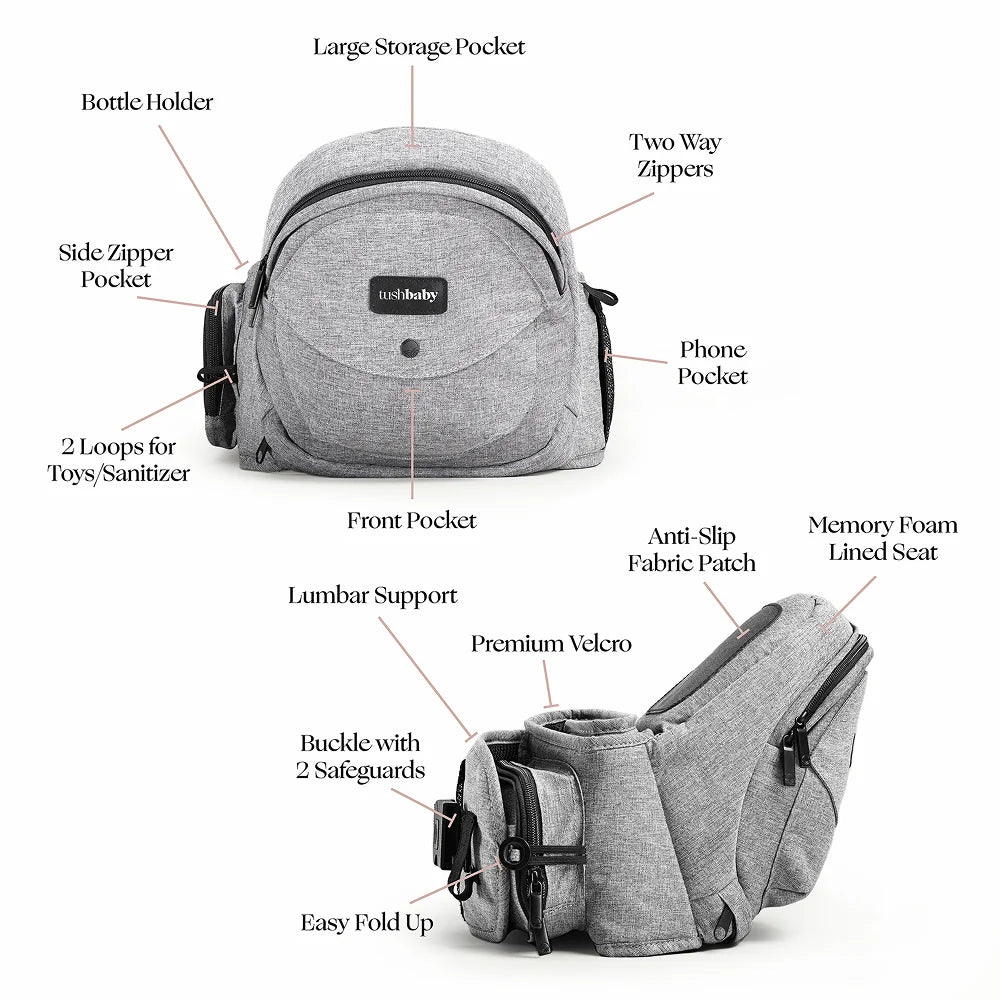
![Tushbaby photo - ::[s-uper-image] ::[e-mbroidery]](http://tushbaby.com/cdn/shop/files/BlackLeather-Monogram1.webp?v=1759513482)
![Tushbaby photo - ::[s-uper-image] ::[e-mbroidery]](http://tushbaby.com/cdn/shop/files/Orchid-Monogram.webp?v=1759513482)
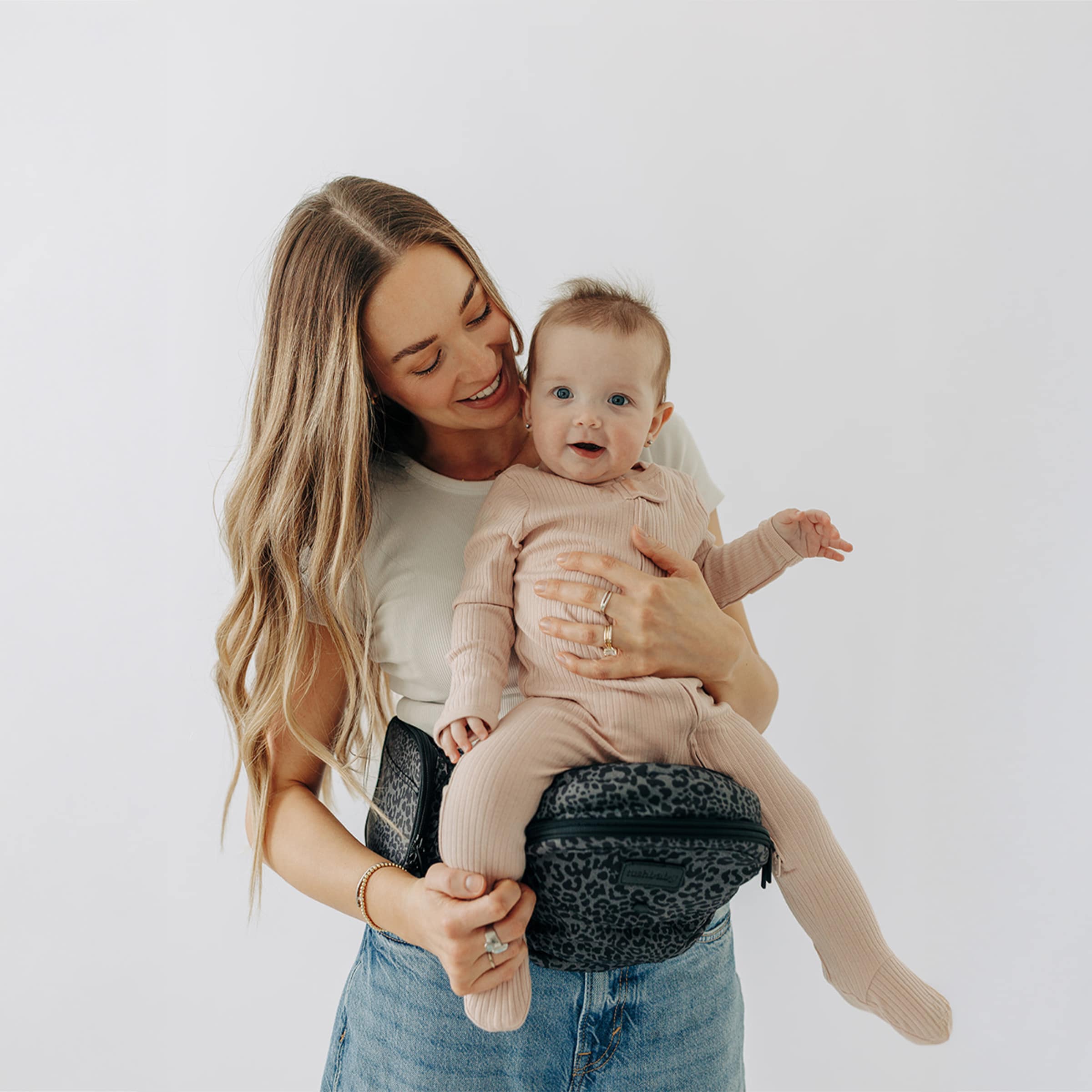
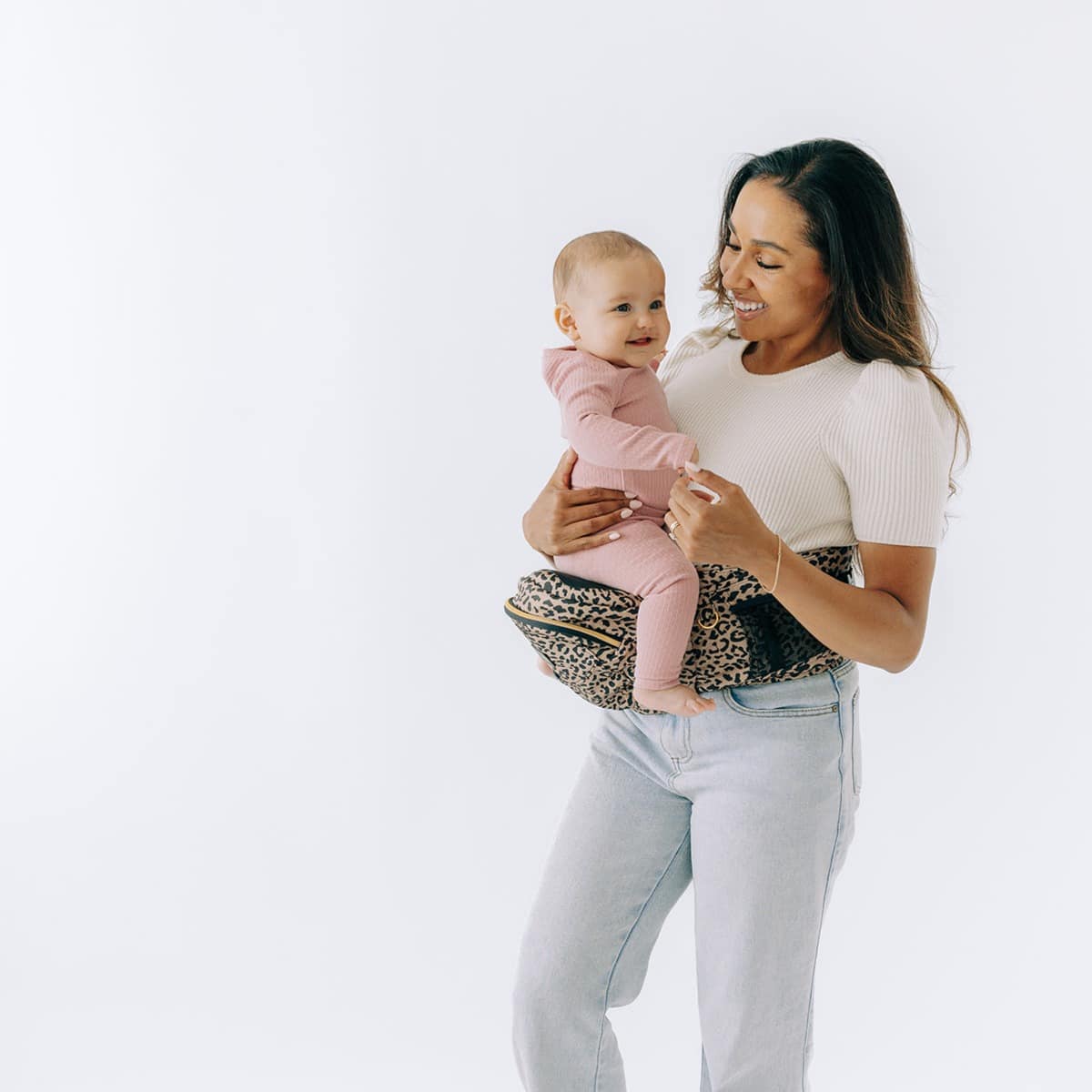
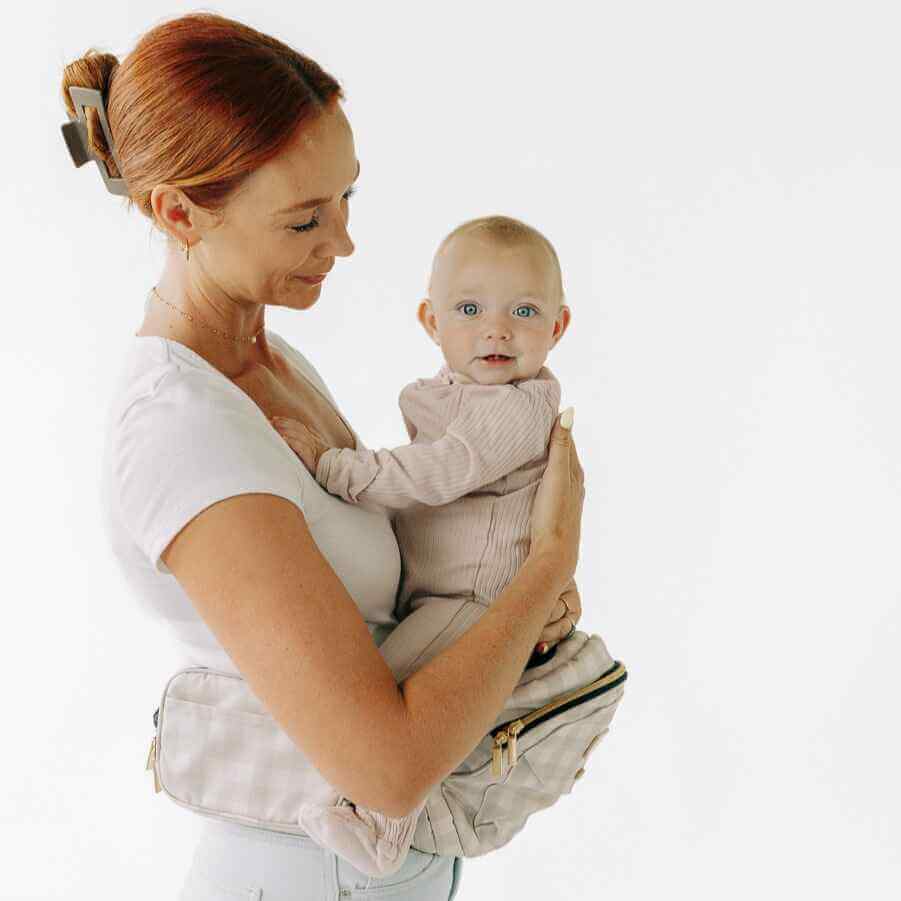
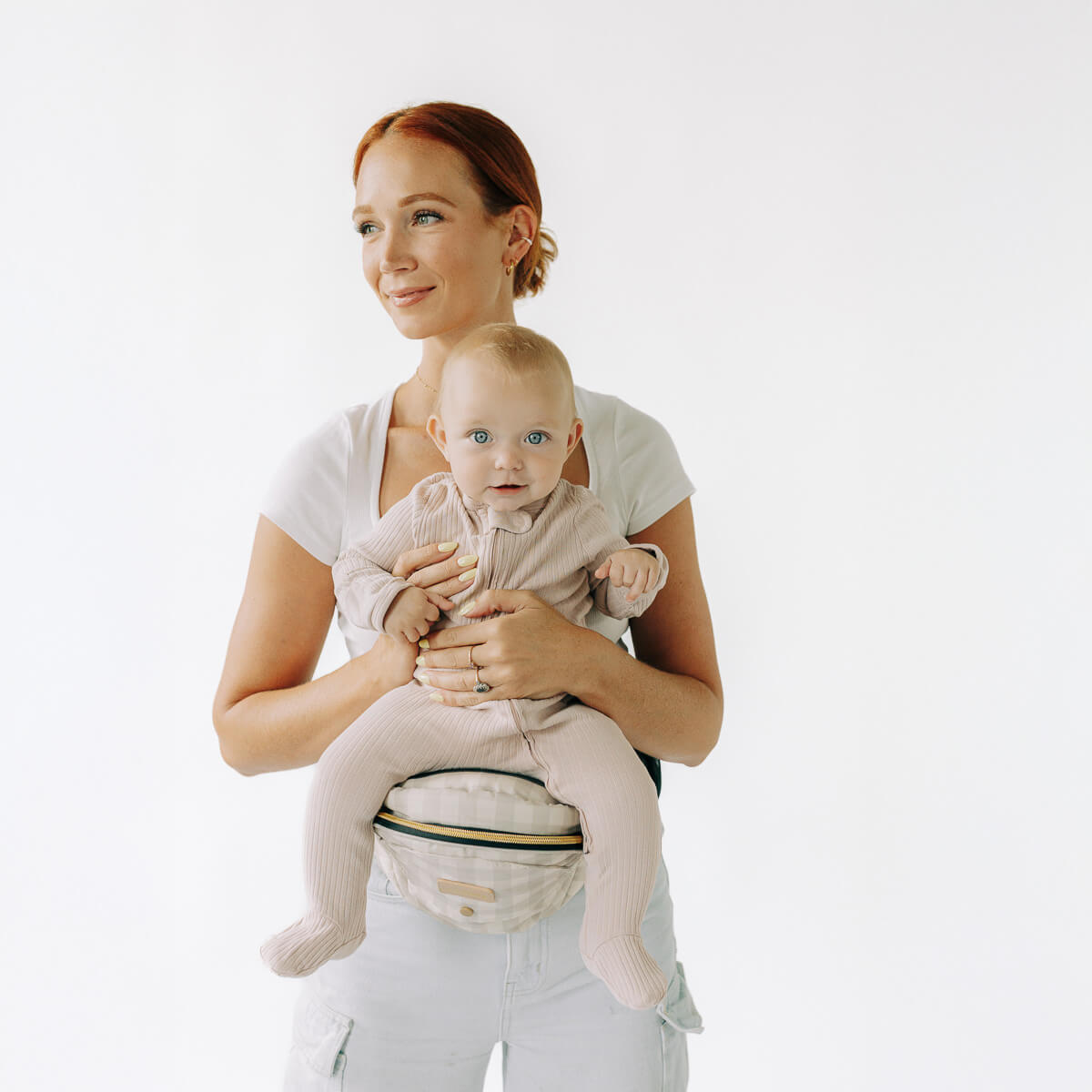



































![Tushbaby photo - Women holding baby using tushbaby gray ::[15109665390658]](http://tushbaby.com/cdn/shop/files/GreyCarrier_160x.webp?v=1762198155)
![Tushbaby photo - Women holding baby using tushbaby gray ::[15109665390658]](http://tushbaby.com/cdn/shop/files/Grey3_160x.webp?v=1748543102)
![Tushbaby photo - Women holding baby using tushbaby gray ::[15109665390658]](http://tushbaby.com/cdn/shop/files/rKeAfN6W_160x.webp?v=1748543102)
![Tushbaby photo - Women holding baby using tushbaby gray ::[15109665390658]](http://tushbaby.com/cdn/shop/files/Grey4_95ede319-844c-41db-96eb-608ec6a3b897_160x.webp?v=1748543102)
![Tushbaby photo - Women holding baby using tushbaby gray ::[15109665390658]](http://tushbaby.com/cdn/shop/files/Grey2_160x.webp?v=1748543102)
![Tushbaby photo - Women holding baby using tushbaby gray ::[15109665390658]](http://tushbaby.com/cdn/shop/files/Grey5_160x.webp?v=1747418215)
![Tushbaby photo - Hip seat carrier,baby carrier hip seat,baby wrap carrier baby carrier wrap,baby carrier,baby wrap carriers,baby carriers,baby wraps,baby sling wrap,baby slings,baby wrap sling,carrier for big baby, toddler carrier, nursing carrier, breastfeeding carrier, diaper bag, baby belt carrier, strapless carrier, big kid carrier, special needs carrier,Tote,Diaper bag,Tote bag,Diaper pad,Changing pad,Pacifier pod,Coin purse,Vegan leather bag,Vegan tote,Vegan baby products,plus sized baby carrier::[15109665390658]](http://tushbaby.com/cdn/shop/files/Grey8_160x.webp?v=1747418215)
![Tushbaby photo - Tushbaby grey holding bottle ::[15109665390658]](http://tushbaby.com/cdn/shop/files/Grey9_160x.webp?v=1747418215)
![Tushbaby photo - Women using tushbaby::[15109665423426]](http://tushbaby.com/cdn/shop/files/BlackColor1_160x.webp?v=1747418215)
![Tushbaby photo - man using tushbaby::[15109665423426]](http://tushbaby.com/cdn/shop/files/BlackColor2_160x.webp?v=1747418215)
![Tushbaby photo - Women using tushbaby::[15109665423426]](http://tushbaby.com/cdn/shop/files/BlackColor3_160x.webp?v=1747418215)
![Tushbaby photo - ::[15109665423426]](http://tushbaby.com/cdn/shop/files/BlackColor4_160x.webp?v=1747418215)
![Tushbaby photo - ::[15109665423426]](http://tushbaby.com/cdn/shop/files/BlackColor5_160x.webp?v=1747418215)
![Tushbaby photo - ::[15109665423426]](http://tushbaby.com/cdn/shop/files/BlackColor6_160x.webp?v=1747418215)
![Tushbaby photo - ::[15109665423426]](http://tushbaby.com/cdn/shop/files/BlackColor7_160x.webp?v=1747418215)
![Tushbaby photo - ::[15109665423426]](http://tushbaby.com/cdn/shop/files/BlackColor9_160x.webp?v=1747418215)
![Tushbaby photo - Women using tushbaby::[15109665521730]](http://tushbaby.com/cdn/shop/files/Black_Gold1_3_160x.webp?v=1747418215)
![Tushbaby photo - Women using tushbaby::[15109665521730]](http://tushbaby.com/cdn/shop/files/Black_Gold2_160x.webp?v=1747418215)
![Tushbaby photo - Women using tushbaby::[15109665521730]](http://tushbaby.com/cdn/shop/files/Black_Gold3_160x.webp?v=1747418215)
![Tushbaby photo - Women using tushbaby::[15109665521730]](http://tushbaby.com/cdn/shop/files/Black_Gold4_160x.webp?v=1747418215)
![Tushbaby photo - Man using tushbaby::[15109665521730]](http://tushbaby.com/cdn/shop/files/Black_Gold5_160x.webp?v=1747418215)
![Tushbaby photo - Women using tushbaby::[15109665521730]](http://tushbaby.com/cdn/shop/files/Black_Gold6_160x.webp?v=1747418215)
![Tushbaby photo - Tushbaby::[15109665521730]](http://tushbaby.com/cdn/shop/files/Black_Gold7_160x.webp?v=1747418215)
![Tushbaby photo - Tushbaby::[15109665521730]](http://tushbaby.com/cdn/shop/files/Black_Gold9_160x.webp?v=1747418215)
![Tushbaby photo - ::[31311822422082]](http://tushbaby.com/cdn/shop/files/VeganLeatherBlack1_160x.webp?v=1747418215)
![Tushbaby photo - ::[31311822422082]](http://tushbaby.com/cdn/shop/files/VeganLeatherBlack3_160x.webp?v=1747418215)
![Tushbaby photo - ::[31311822422082]](http://tushbaby.com/cdn/shop/files/VeganLeatherBlack4_160x.webp?v=1747418215)
![Tushbaby photo - ::[31311822422082]](http://tushbaby.com/cdn/shop/files/VeganLeatherBlack5_160x.webp?v=1747418215)
![Tushbaby photo - ::[31311822422082]](http://tushbaby.com/cdn/shop/files/VeganLeatherBlack7_160x.webp?v=1747418215)
![Tushbaby photo - ::[31311822422082]](http://tushbaby.com/cdn/shop/files/VeganLeatherBlack8_160x.webp?v=1747418215)
![Tushbaby photo - ::[31311822422082]](http://tushbaby.com/cdn/shop/files/VeganLeatherBlack9_160x.webp?v=1747418215)
![Tushbaby photo - ::[40092713287746]](http://tushbaby.com/cdn/shop/files/LiteCharcoal1_160x.webp?v=1747418215)
![Tushbaby photo - ::[40092713287746]](http://tushbaby.com/cdn/shop/files/LiteCharcoal2_160x.webp?v=1747418215)
![Tushbaby photo - ::[40092713287746]](http://tushbaby.com/cdn/shop/files/LiteCharcoal3_160x.webp?v=1747418215)
![Tushbaby photo - ::[40092713287746]](http://tushbaby.com/cdn/shop/files/LiteCharcoal4_160x.webp?v=1747418215)
![Tushbaby photo - ::[40092713287746]](http://tushbaby.com/cdn/shop/files/LiteCharcoal6_160x.webp?v=1747418215)
![Tushbaby photo - ::[40092713287746]](http://tushbaby.com/cdn/shop/files/LiteCharcoal7_160x.webp?v=1747418215)
![Tushbaby photo - ::[40092713287746]](http://tushbaby.com/cdn/shop/files/LiteCharcoal8_160x.webp?v=1747418215)
![Tushbaby photo - ::[40092713320514]](http://tushbaby.com/cdn/shop/files/VelvetSable1_160x.webp?v=1747418215)
![Tushbaby photo - ::[40092713320514]](http://tushbaby.com/cdn/shop/files/VelvetSable3_160x.webp?v=1747418215)
![Tushbaby photo - ::[40092713320514]](http://tushbaby.com/cdn/shop/files/VelvetSable4_160x.webp?v=1747418215)
![Tushbaby photo - ::[40092713320514]](http://tushbaby.com/cdn/shop/files/VelvetSable5_160x.webp?v=1747418215)
![Tushbaby photo - ::[40092713320514]](http://tushbaby.com/cdn/shop/files/VelvetSable6_160x.webp?v=1747418215)
![Tushbaby photo - ::[40092713320514]](http://tushbaby.com/cdn/shop/files/VelvetSable7_160x.webp?v=1747418215)
![Tushbaby photo - ::[40092713320514]](http://tushbaby.com/cdn/shop/files/VelvetSable8_160x.webp?v=1747418215)
![Tushbaby photo - ::[40288698040386]](http://tushbaby.com/cdn/shop/files/VeganLeatherCognac1_160x.webp?v=1747418215)
![Tushbaby photo - ::[40288698040386]](http://tushbaby.com/cdn/shop/files/VeganLeatherCognac3_160x.webp?v=1747418215)
![Tushbaby photo - ::[40288698040386]](http://tushbaby.com/cdn/shop/files/VeganLeatherCognac4_160x.webp?v=1747418215)
![Tushbaby photo - ::[40288698040386]](http://tushbaby.com/cdn/shop/files/VeganLeatherCognac5_160x.webp?v=1747418215)
![Tushbaby photo - ::[40288698040386]](http://tushbaby.com/cdn/shop/files/VeganLeatherCognac6_160x.webp?v=1747418215)
![Tushbaby photo - ::[40288698040386]](http://tushbaby.com/cdn/shop/files/VeganLeatherCognac7_160x.webp?v=1747418215)
![Tushbaby photo - ::[40288698040386]](http://tushbaby.com/cdn/shop/files/VeganLeatherCognac8_160x.webp?v=1747418215)
![Tushbaby photo - ::[40288698040386]](http://tushbaby.com/cdn/shop/files/VeganLeatherCognac9_160x.webp?v=1747418215)
![Tushbaby photo - ::[40288698040386]](http://tushbaby.com/cdn/shop/files/VeganLeatherCognac10_160x.webp?v=1747418215)
![Tushbaby photo - ::[40503457382466]](http://tushbaby.com/cdn/shop/files/Orchid1Square_160x.webp?v=1747418215)
![Tushbaby photo - ::[40503457382466]](http://tushbaby.com/cdn/shop/files/Orchid3Square_160x.webp?v=1747418215)
![Tushbaby photo - ::[40503457382466]](http://tushbaby.com/cdn/shop/files/Orchid4Square_160x.webp?v=1747418215)
![Tushbaby photo - ::[40503457382466]](http://tushbaby.com/cdn/shop/files/Orchid5Square_160x.webp?v=1747418215)
![Tushbaby photo - ::[40503457382466]](http://tushbaby.com/cdn/shop/files/Orchid6Square_160x.webp?v=1747418215)
![Tushbaby photo - ::[40503457382466]](http://tushbaby.com/cdn/shop/files/Orchid7Square_160x.webp?v=1747418215)
![Tushbaby photo - ::[40503457382466]](http://tushbaby.com/cdn/shop/files/Orchid8Square_160x.webp?v=1747418215)
![Tushbaby photo - ::[40503457382466]](http://tushbaby.com/cdn/shop/files/Orchid9Square_160x.webp?v=1747418215)
![Tushbaby photo - ::[40503457382466]](http://tushbaby.com/cdn/shop/files/Orchid10Square_160x.webp?v=1747418215)
![Tushbaby photo - ::[40288993017922]](http://tushbaby.com/cdn/shop/files/VeganLeatherCream1_160x.webp?v=1747418215)
![Tushbaby photo - ::[40288993017922]](http://tushbaby.com/cdn/shop/files/VeganLeatherCream3_160x.webp?v=1747418215)
![Tushbaby photo - ::[40288993017922]](http://tushbaby.com/cdn/shop/files/VeganLeatherCream4_160x.webp?v=1747418215)
![Tushbaby photo - ::[40288993017922]](http://tushbaby.com/cdn/shop/files/VeganLeatherCream6_160x.webp?v=1747418215)
![Tushbaby photo - ::[40288993017922]](http://tushbaby.com/cdn/shop/files/TBcream_blackseat2_160x.jpg?v=1759513482)
![Tushbaby photo - ::[40288993017922]](http://tushbaby.com/cdn/shop/files/VeganLeatherCream7_160x.webp?v=1759513482)
![Tushbaby photo - ::[40288993017922]](http://tushbaby.com/cdn/shop/files/VeganLeatherCream9_160x.webp?v=1759513482)
![Tushbaby photo - ::[40503457415234]](http://tushbaby.com/cdn/shop/files/SnowLeopard1_160x.webp?v=1759513482)
![Tushbaby photo - ::[40288993017922]](http://tushbaby.com/cdn/shop/files/TBcream_blackseat1_b994af6f-4e75-4f7b-b8ba-9750798bd0e7_160x.jpg?v=1759513482)
![Tushbaby photo - ::[40503457415234]](http://tushbaby.com/cdn/shop/files/SnowLeopard3_160x.webp?v=1759513482)
![Tushbaby photo - ::[40503457415234]](http://tushbaby.com/cdn/shop/files/SnowLeopard4_160x.webp?v=1759513482)
![Tushbaby photo - ::[40503457415234]](http://tushbaby.com/cdn/shop/files/SnowLeopard5_160x.webp?v=1759513482)
![Tushbaby photo - ::[40503457415234]](http://tushbaby.com/cdn/shop/files/SnowLeopard6_160x.webp?v=1759513482)
![Tushbaby photo - ::[40503457415234]](http://tushbaby.com/cdn/shop/files/SnowLeopard7_160x.webp?v=1759513482)
![Tushbaby photo - ::[40503457415234]](http://tushbaby.com/cdn/shop/files/SnowLeopard8_160x.webp?v=1759513482)
![Tushbaby photo - ::[40503457415234]](http://tushbaby.com/cdn/shop/files/SnowLeopard9_160x.webp?v=1759513482)
![Tushbaby photo - ::[40503457448002]](http://tushbaby.com/cdn/shop/files/Tweed1.-Square_160x.webp?v=1759513482)
![Tushbaby photo - ::[40503457448002]](http://tushbaby.com/cdn/shop/files/Tweed3-Square_160x.webp?v=1759513482)
![Tushbaby photo - ::[40503457448002]](http://tushbaby.com/cdn/shop/files/Tweed4-Square_160x.webp?v=1759513482)
![Tushbaby photo - ::[40503457448002]](http://tushbaby.com/cdn/shop/files/Tweed5-Square_160x.webp?v=1759513482)
![Tushbaby photo - ::[40503457448002]](http://tushbaby.com/cdn/shop/files/Tweed6-Square_160x.webp?v=1759513482)
![Tushbaby photo - ::[40503457448002]](http://tushbaby.com/cdn/shop/files/Tweed8-Square_160x.webp?v=1759513482)
![Tushbaby photo - ::[41633540800578]](http://tushbaby.com/cdn/shop/files/Marble1_160x.webp?v=1759513482)
![Tushbaby photo - ::[41633540800578]](http://tushbaby.com/cdn/shop/files/Marble2_160x.webp?v=1759513482)
![Tushbaby photo - ::[41633540800578]](http://tushbaby.com/cdn/shop/files/Marble4_160x.webp?v=1759513482)
![Tushbaby photo - ::[41633540800578]](http://tushbaby.com/cdn/shop/files/Marble5_160x.webp?v=1759513482)
![Tushbaby photo - ::[41633540800578]](http://tushbaby.com/cdn/shop/files/Marble6_160x.webp?v=1759513482)
![Tushbaby photo - ::[41633540800578]](http://tushbaby.com/cdn/shop/files/Marble7_160x.webp?v=1759513482)
![Tushbaby photo - ::[41633540800578]](http://tushbaby.com/cdn/shop/files/Marble8_160x.webp?v=1759513482)
![Tushbaby photo - ::[41633540800578]](http://tushbaby.com/cdn/shop/files/Marble9_160x.webp?v=1759513482)
![Tushbaby photo - ::[41984257556546]](http://tushbaby.com/cdn/shop/files/Olive1_297431f9-eeb3-411c-bc0e-08d37e703197_160x.webp?v=1759513482)
![Tushbaby photo - ::[41984257556546]](http://tushbaby.com/cdn/shop/files/Olive2_bb6953ff-d61f-471a-b48f-3b36c7dbfb21_160x.webp?v=1759513482)
![Tushbaby photo - ::[41984257556546]](http://tushbaby.com/cdn/shop/files/Olive3_97f99469-33f5-4192-9446-dcdfdbf32e84_160x.webp?v=1759513482)
![Tushbaby photo - ::[41984257556546]](http://tushbaby.com/cdn/shop/files/Olive4_f9c88ddf-96de-476c-bef3-d57f9ddbd5c1_160x.webp?v=1759513482)
![Tushbaby photo - ::[41984257556546]](http://tushbaby.com/cdn/shop/files/Olive5_e2741f35-99ec-4ed5-9307-809ef4ead286_160x.webp?v=1759513482)
![Tushbaby photo - ::[41984257556546]](http://tushbaby.com/cdn/shop/files/Olive6_a66205d9-b767-4224-a04f-6e20597c7c38_160x.webp?v=1759513482)
![Tushbaby photo - ::[41984257556546]](http://tushbaby.com/cdn/shop/files/Olive7_ab97dc70-f0b9-4a70-9137-943b8e3982e1_160x.webp?v=1759513482)
![Tushbaby photo - ::[41984257556546]](http://tushbaby.com/cdn/shop/files/Olive8_160x.webp?v=1759513482)
![Tushbaby photo - ::[41984257556546]](http://tushbaby.com/cdn/shop/files/Olive9_160x.webp?v=1759513482)
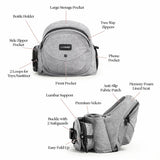
![Tushbaby photo - ::[s-uper-image] ::[e-mbroidery]](http://tushbaby.com/cdn/shop/files/BlackLeather-Monogram1_160x.webp?v=1759513482)
![Tushbaby photo - ::[s-uper-image] ::[e-mbroidery]](http://tushbaby.com/cdn/shop/files/Orchid-Monogram_160x.webp?v=1759513482)

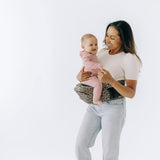
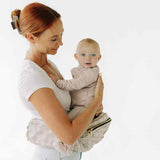
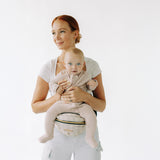







































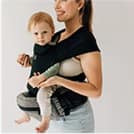


Leave a comment